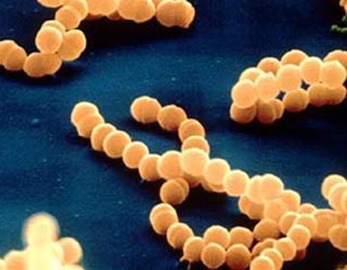A basic information
Streptococcus Thermophilus belongs to the genus Streptococcus, Gram-positive bacteria, no spores, no flagella, non-movement, homo-fermented lactose, non-liquefied gelatin, facultative anaerobic bacteria or slightly aerobic. Common carbon sources used by Streptococcus thermophilus include glucose, sucrose, lactose, fructose, maltose, trehalose, mannitol, sorbitol, etc., among which the most easily used are disaccharides, such as sucrose and lactose.
Product specifications
Live bacteria content ≥ 10 billion cfu / g, powder, packed in aluminum foil bag, 1 kg / bag.
Three strain characteristics
1. Isolated from dairy products and healthy human intestines;
2. Acid and bile salt resistant, producing extracellular polysaccharides, bacteriocins, vitamins, etc .;
3. It can inhibit the growth of pathogenic bacteria such as Clostridium difficile, Salmonella typhimurium, E. coli, Listeria monocytogenes, Clostridium perfringens;
4. Promote intestinal peristalsis, regulate intestinal flora, maintain intestinal flora balance, and inhibit diarrhea;
5. Produce β-galactosidase, promote the digestion and absorption of lactose, and alleviate lactose intolerance.
Four size and colony morphology
1. Size Under the microscope, the cells are round or oval, and often appear in pairs or chains. The two oval-shaped cocci are connected, without flagella, and do not move.
2. Colony morphology Streptococcus thermophilus has the best regeneration effect on a two-layer regeneration culture grave under aerobic conditions, showing milky white colonies of different sizes and round shapes. On the M17 solid medium, the colonies formed are smaller and have Smooth edges, convex surface, and smooth.
Five suitable for growing environment
1 The optimum growth temperature is 38 ° C ~ 43 ° C, the lowest growth temperature is 19 ~ 21 ° C, the highest growth temperature is 52 ° C, it can survive for 30 minutes at 60 ° C, and the heat resistance is good; the optimum pH is 6.0 ~ 7.0, The initial growth pH is 3.0-7.0, strong acid resistance, can grow and reproduce in environments where other lactic acid bacteria can not grow; Streptococcus thermophilus has a strong bile salt tolerance.
2. Streptococcus thermophilus does not have an enzyme system that breaks down starch and macromolecular carbohydrates, so macromolecular substances cannot be used as carbon sources. The available carbon sources are mainly monosaccharides such as glucose and some oligosaccharides. Protease activity is usually weak or even lacks the necessary proteases, so the nitrogen source most suitable for them is protein hydrolysate; growth and reproduction require certain growth factors, and the appropriate amount of tomato juice in the medium can promote the growth of S. thermophilus. Tomato juice not only provides a carbon source for S. thermophilus, but also contains nucleotides and minerals that are indispensable for the growth of S. thermophilus. It is rich in nutrients and can promote the growth of S. thermophilus.
Growth characteristics
1 Culture characteristics: culture in the laboratory, can be cultured with M17 medium, they can produce a large amount of lactic acid, can grow in a medium with a lower pH and a higher temperature, used when the Streptococcus thermophilus dilution Sterile distilled water, do not use physiological saline, saline will reduce the physiological activity of Streptococcus thermophilus.
2 Biochemical characteristics: Common carbon sources for Streptococcus thermophilus include glucose, sucrose, lactose, fructose, maltose, trehalose, mannitol, sorbitol, etc., the most easily used are disaccharides, such as sucrose and lactose; The growth and reproduction of cocci requires certain vitamins, folic acid and other growth factors, and it grows slowly; it can break down lactose and alleviate lactose intolerance, etc.


Lecithin












